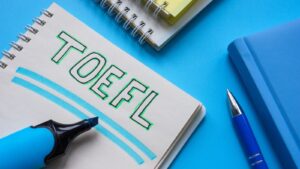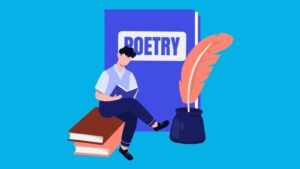by Sandi Ferdiansyah
Reading in English as a second or foreign language can become a daunting task for language learners. In fact, they need to deal with a bundle of complex linguistic resources such as lexicogrammar which is different from their mother tongue to enable them to make meaning of the texts they read. In addition to this, teachers need to consider suitable pedagogical approach particularly in an intensive reading program that works best to help develop the ability of the learners to construe meaning, identify text organization and function, and draw inference. To fill the void, I employ collaborative text – based teaching in my intensive reading class to engage the first-year undergraduate students in a university in Indonesia in meaningful reading activities. The course requires students to develop their reading comprehension in Islamic contemporary issues related topics. Pedagogically speaking, text-based teaching begins with observing and understanding texts, responding to the texts, analyzing the texts, and ends with composing the texts (Mickan, 2017).
Preparation
To implement collaborative text-based teaching in the intensive reading class, I need to prepare reading passage, pictures, reading questions card, SHOWED based reflection template, and self-assessment. The teachers can consider the selection of the reading passage based on the level of student’s language proficiency. Reading passages with lower difficulty level and familiar topics can be used because it will help students make meaning of the passage with ease and build their motivation in learning. The reading question card of an open-ended type is prepared to help students focus on understanding key points of the passage. The number of the questions is limited to 4 to 5 questions to avoid students’ boredom and distress in learning. There are two types of question, questions that ask the content of the reading passage and the organization of the text. I design showed based reflection template used to promote critical thinking and analysis. The use of picture helps learners associate the topic of discussion with the reading materials. It also stimulates learners with vocabulary building and sentence construction used to talk about the topic presented. Finally, a self-assessment form is created for nurturing students in reflective practice. Here are the procedures that I design for my intensive reading class that lasts for 90 minutes.
Procedure
Pre-reading task
This learning phase guides students learning through observation of visual text. I form a discussion circle, a task, that aims at building student’s background knowledge of the topic will be discussed through role rotation. To begin with, the teacher will show pictures and ask the students to guess the words that best depict the pictures. What follows are steps in implementing discussion circle (15 minutes)
- Students will be divided into different groups equally in terms of number, genders, and language proficiency level. Later, they will be assigned as host group and visiting group. They will be assigned different roles, such as presenter, writer, and/ or language consultant. The writer’s job is to draft and jot down the ideas during group discussion, and language consultant is responsible to check and revise its draft. The presenter has a responsibility to present the result of group discussion. The collaborative learning can be useful for the development of learner autonomy, creative and critical thinking, and collaboration skills.
- Each group is assigned to select an image and asked to conduct a group
discussion guided by SHOWED worksheet (Adopted from Treadwell & Taylor, 2017). They will be given 5 minutes to SHOWED worksheet contains:

Picture source: https://plus.kapanlagi.com/nyepi-38-gerhana-toleransi-umat-beragama-di-bali-ini-bikin-adem-5cf0c5.htm
- What can be Seen here?
- What is Happening in the photo?
- How does this situation/ phenomenon relate to Our lives?
- Why are things this Way?
- How could this photo Educate us?
- What can we Do about this?
- The visiting group will visit the host group and talk about the image they have got. The host group will jot down and summarize the presentation. The discussion is guided by the SHOWED worksheet. This activity will be done in 5 minutes..
- Each group will present the result of the discussion in front of the class in 5 minutes.
While Reading Tasks
The tasks in this learning phase focus on shaping students’ reading comprehension skills such as identifying topic or main idea, supporting details, drawing inferences, and vocabulary in context. At the outset, teacher leads discussion facilitating the introduction of the vocabularies related to the topic of the passage. Next, the students will be given a passage to read within the group. They will be asked to pick 1 or 2 unfamiliar word(s) of each paragraph. They jot them down into the template made by the teacher. They need to justify the word class (noun, verb, adjective, or adverb), its phonetic symbol, meaning, and example how the word is used in a sentence. To help them do this, they can go to MacMillan Online Dictionary or Oxford Online Dictionary. This activity will be done in 15 Minutes.
After that, I initiate the discussion of the text that aims at helping students respond to the text. Group discussion is implemented to engage students in collaborative reading tasks. They will be encouraged to analyze pros and cons points stated in the text. The following questions are used to help guide their analysis which they need to complete in 15 minutes.
- What is the topic of the passage?
- What are the arguments for the topic of the passage? Write your reasons and evidence.
- What are the arguments against the topic of the passage? Write your reasons and evidence.
- Students are required to draw the result of analysis into a poster/ mind map that depicts the answer of the questions. They present their poster to the other groups.
When the students finish presenting the first reading task, I continue requesting them to engage in text analysis activity. It focuses on facilitating the development of students’ understanding of the generic structure of the passage, communicative purposes of the author, and grammatical features of the text. With the same passage, the questions below are used to help guide their discussion in 15 minutes:
- How is the text structured? Justify your answer.
- What is the communicative purpose of the author writing the text?
- What grammatical features are mainly used in the passage? Write some for evidence
Post reading tasks
In the final task, I design an activity that provides students with an opportunity to compose a piece of text or visual text. The goal of this task is to evaluate the students’ understanding of the topic being discussion. They are required to write a paragraph of 100 words, or a poster based on their reading journey that predicts how the issue is going to be in the future. From this activity, I truly expect that the students can exercise their critical thinking with the knowledge they have internalized from reading the passage. Moreover, it gives students chance to express their ideas and thoughts responding to the issue. This task takes 20 minutes to do.
Reflection
Reflection is an important part of learning that enables learners to deeply see what they have learned, how they do it, and what they can do next. To promote reflective practice, self – assessment is distributed to help students understand their own learning progress. The students are guided to reflect on their learning guided by the questions the teacher has made. The questions should concern the development of reflective practice skill and critical thinking. The students are given 10 minutes to fill out the self-assessment table.
| No | Descriptions | 1 | 2 | 3 | 4 | 5 |
| 1 | I now understand better the vocabularies related to the topic | |||||
| 2 | I now understand better how to use the vocabularies in context | |||||
| 3 | I now understand better the structure of argumentative reading passage | |||||
| 4 | I now understand better the purpose of the author writing the passage | |||||
| 5 | I now understand better how main idea is presented in the passage | |||||
| 6 | I now understand better how to draw inference of the passage | |||||
| 7 | I now understand better how to react to the passage through paragraph writing | |||||
| 8 | I am able to develop my creative and critical thinking | |||||
| 9 | I engage in group discussion with my best capacity | |||||
| 10 | I feel happy when technology is integrated in learning to read | |||||
| 11 | I fill out this self-assessment checklist truthfully |
Final task
In the final task, I design an activity that provides students with an opportunity to compose a piece of text or visual text. The goal of this task is to evaluate the students’ understanding of the topic being discussion. They are required to write a paragraph of 100 words, or a poster based on their reading journey that predicts how the issue is going to be in the future. From this activity, I truly expect that the students can exercise their critical thinking with the knowledge they have internalized from reading the passage. Moreover, it gives students chance to express their ideas and thoughts responding to the issue. This task takes 20 minutes to do.
Reference
- Mickan, P. 2017. Text-based research and teaching from a social semiotic perspective: Transformative research and pedagogy. In Text based research and teaching: A social semiotic perspective on language in use. eds. P. Mickan & E. Lopez., 15 – 35. London: Palgrave Macmillan.
- Treadwell, S. M & Taylor, N. 2017. PE in pictures: Using photovoice to promote middle school students’ reflections on physical activity during free time, Journal of
- Physical Education, Recreation & Dance, vol. 88(4), 26 – 33.







